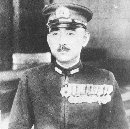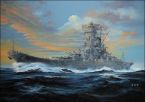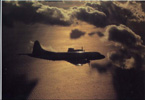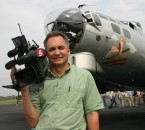ChezDaJez
Posts: 3436
Joined: 11/12/2004
From: Chehalis, WA
Status: offline

|
quote:
ORIGINAL: Mike Scholl
quote:
ORIGINAL: niceguy2005
The Japanese had not yet mastered mass production of sophisticated equipment on a mass scale. IMO this played a critical part in plane design. Because of production constraints, the amount of innovation that could go into a new design was limited. While the US could test many unique prototypes and select many for production Japan had to be very careful about what designs it chose to develop and needed to leverage already existing production capacity. Japan had some very good engineers, but not nearly enough of them to do what they really needed to do in their aviation industry. All this leads to the idea that even had Japan wanted to incorporate new features into their designs they couldn't have produced them a lot of new planes.
Again, a lot of accurate observations. Many things conspired against Axis Powers adopting "mass production", and lack of engineering capacity was certainly part of it. Also lack of Industrial Experiance, and a military that didn't want to deal with the constrictions of "mass production". They wanted to deal with small familiar firms that could give them some of what they wanted quickly. They didn't want to hear about "lead times" and "setting up facilities" and "simplifying the design" and other things needed to begin production on a mass basis---and they didn't want to hear about massive production stoppages every time they decided they wanted a new "widget" added to the product.
On the other side of the Ocean was the US.., where Eli Whitney had laid the groundwork for mass production around 1800, and Henry Ford had perfected the process about 1910. Huge industrial complexes had grown up around it's use.., and if theoretical science was a bit behind, practical engineering and industrial process was a decade ahead of the rest of the world. Americans had learned the art of "thinking big", and that's the attitude they took to war.
I agree... lots of very good and accurate observations. But also add in the rivalry between the IJ army and navy. That rivalry probably delayed production efforts as much as any shortage of strategic materials or lack of mass production ability. Both Mitsubishi and Nakajima were required to keep separate design and production teams for each service. And there was no liaison between the two. The Japanese aviation industry did prove that they were capable of producing designs that rivaled anything the allies had. Getting them into the air was another matter.
Chez
_____________________________
Ret Navy AWCS (1972-1998)
VP-5, Jacksonville, Fl 1973-78
ASW Ops Center, Rota, Spain 1978-81
VP-40, Mt View, Ca 1981-87
Patrol Wing 10, Mt View, CA 1987-90
ASW Ops Center, Adak, Ak 1990-92
NRD Seattle 1992-96
VP-46, Whidbey Isl, Wa 1996-98
|
 Printable Version
Printable Version

























 New Messages
New Messages No New Messages
No New Messages Hot Topic w/ New Messages
Hot Topic w/ New Messages Hot Topic w/o New Messages
Hot Topic w/o New Messages Locked w/ New Messages
Locked w/ New Messages Locked w/o New Messages
Locked w/o New Messages Post New Thread
Post New Thread